The Massachusetts Bay Colony became the most successful colony in Colonial America and would only be surpassed later as other colonies such as New York, Pennsylvania, and Virginia grew up.
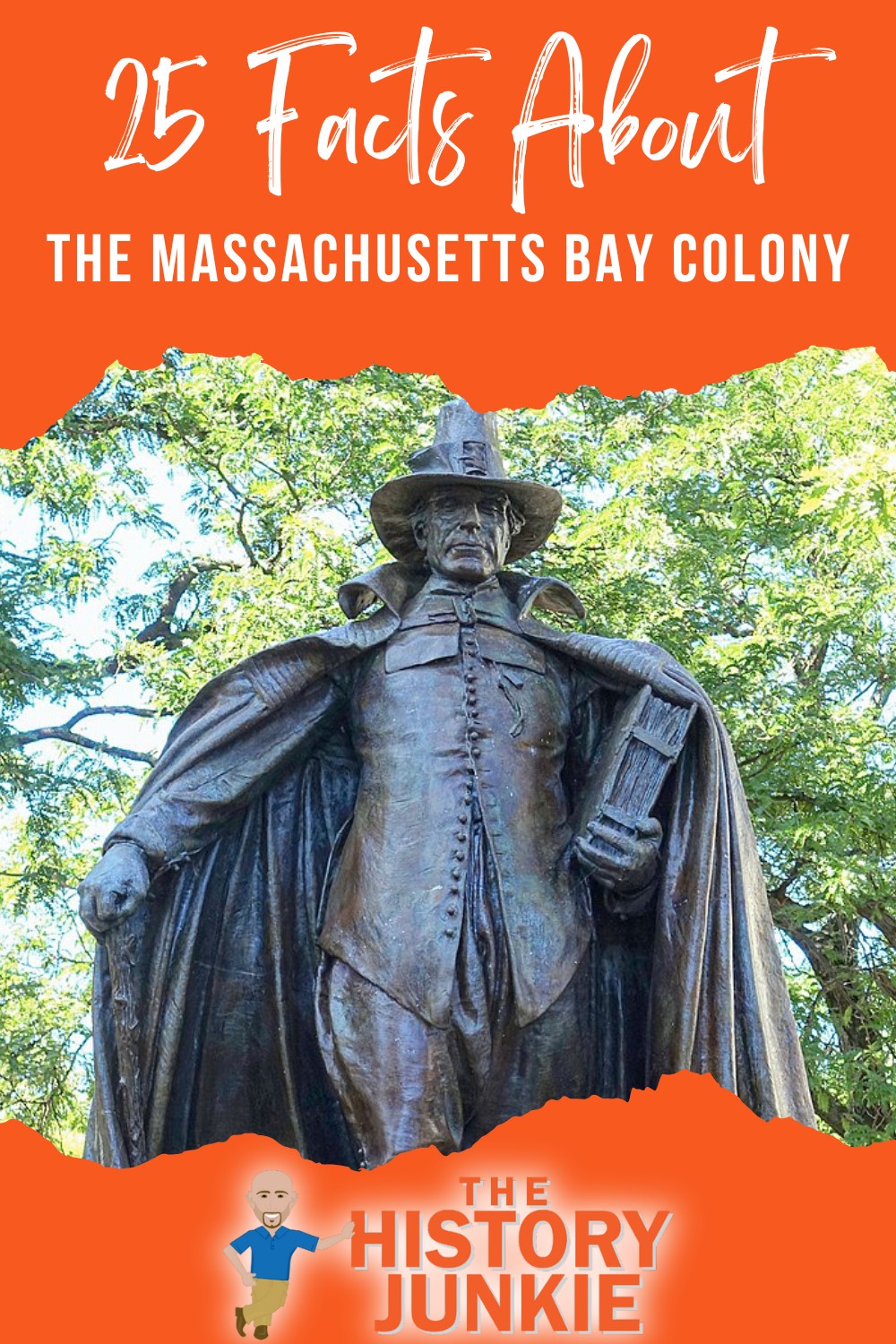
Also Read - 10 Facts About Colonial America
The colony began with humble beginnings with Plymouth and then went through an intense migration.
Jump to:
- 1. John Cabot Was The First To Explore The Coast of Massachusetts Bay Colony
- 2. The Pilgrims Laid The Foundation For Future Colonies
- 3. City On A Hill
- 4. John Winthrop Had A Lasting Impact on Early Massachusetts Bay Colony
- 5. The Great Migration Made Massachusetts Bay The Most Influential Colony
- 6. Harvard University Was Founded in 1636
- 7. Roger Williams Was Banished Due To Doctrine
- 8. Anne Hutchinson Became a Hero of Women In Colonial America
- 9. Connecticut Colony Was An Offshoot Of Massachusetts Bay Colony
- 10. The Pequot War Threatened To Destroy New England
- 11. New Haven Colony Was a Failure
- 12. Puritan Women During This Time Are Misunderstood
- 13. The Economy Was Much Different Than The Southern Colonies
- 14. King Philip's War Ended Many Years of Peace Between the Colonists and the Wampanoag and Narragansett Tribes
- 15. Plymouth Colony Was Absorbed in 1691
- 16. The Salem Witch Trials Cast a Dark Light on the Puritans
- 17. Massachusetts Was Home To Master Shipbuilders
- 18. The Power of the Clergy Could Be Suffocating
- 19. Massachusetts Supplied More Soldiers Than Any Colony During the French and Indian War
- 20. The Townshend and Intolerable Acts Cause An Uproar
- 21. Sons of Liberty and Other Resistance Organizations Existed Throughout Massachusetts
- 22. The Boston Massacre Leads To More Blood
- 23. The Boston Massacre Trials Was A Landmark Decision
- 24. The Boston Tea Party Escalated New England Closer to War
- 25. The British Are Put Under a Siege in Boston
They held good relations with most Native Americans until the late 17th century, and they would become the hotbed for the American Revolution.
This is a list of 25 facts, all listed in Chronological Order.
1. John Cabot Was The First To Explore The Coast of Massachusetts Bay Colony

Prior to the English colonization of the New World, there were a few famous explorers who sailed the coast of what became Massachusetts.
The first was John Cabot, who was commissioned by King Henry VII in response to Christopher Columbus's successful voyage across the Atlantic to the West Indies.
Cabot sailed a different route and navigated the area that would be the future home of the Pilgrims and Puritans. He would mysteriously disappear on the following voyage.
Also Read - A Summary of the Massachusetts Bay Colony
The second explorer to reach the area was Giovanni da Verrazzano, who was an Italian explorer who sailed for France in search of the Northwest Passage.
Bartholomew Gosnold was an English lawyer who sailed along the East Coast of the New Continent and mapped what he saw. He returned due to running into hostile Northeast Indian Tribes, but his voyage probably laid the foundation for the founding of Jamestown.
Samuel de Champlain also navigated around the area and mapped out what he saw for the French Crown. He would go on to establish New France in what is now Canada.
The last explorer to check out the area would be Captain John Smith, who was an influential leader of the Jamestown Colony. He mapped out the area and sent those maps to England.
2. The Pilgrims Laid The Foundation For Future Colonies
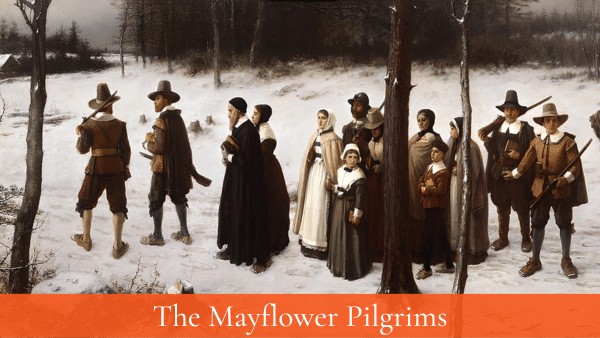
The Pilgrims were made up of Strangers and Separatists. The Separatists were different from the Puritans in that they wanted to completely separate from what they believed to be a corrupt Church of England, while the Puritans believed that the church could still be reformed and wanted to purify the church.
Originally, the Pilgrims were going to land in Virginia Colony and create their new colony, but after being blown off course, losing one of their ships, and winter setting in, they opted to settle in what became known as Plymouth.
Plymouth was a struggle from the beginning of the colony to the end. The first winter was terrible, and about half of the passengers on the Mayflower lost their lives.
They survived with the help of the Wampanoag Tribe. They agreed to an alliance with the tribe, and in return, Chief Massasoit, Samoset, and Squanto helped them with their first harvest.
While this is technically not the settlement of the Massachusetts Bay Colony, it certainly laid the foundation for a new location to be colonized.
3. City On A Hill
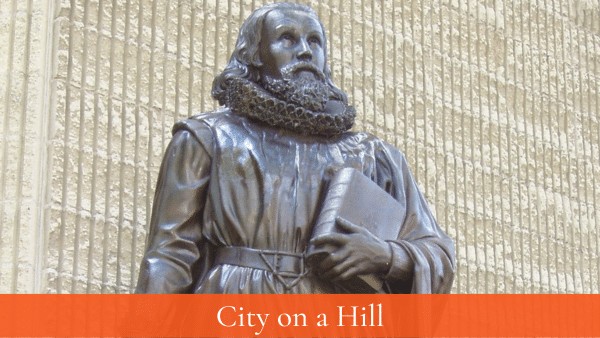
A famous sermon was given by John Winthrop called A Model of Christian Charity, and within that sermon was a phrase that stuck that said the new colony was to be a "City on a hill".
This is the entire reason many of the Puritans fled England for America. They believed that the Church of England was too corrupt and unable to be purified. Instead of enduring endless persecution, they brokered a deal that allowed them to come to the New World and begin a colony.
A City on a Hill would become somewhat of a motto for Colonial America, especially for those in the New England Colonies. This idea that they could create a new culture that was dedicated to Christ and put into place the Protestant work ethic that would lead to a successful culture was their hope.
They succeeded in accomplishing this. Despite setbacks that I write about later in this article, they became a wealthy colony, and their ideas would lead to the growth of that would become the most powerful nation in world history.
4. John Winthrop Had A Lasting Impact on Early Massachusetts Bay Colony

I have already mentioned him previously, but I can not state enough how important John Winthrop was to the development of the Massachusetts Bay Colony.
He departed from the Isle of Wight to America with two of his sons. Along the way, he delivered his famous sermon that I spoke about above, and when he arrived in Massachusetts, he and Thomas Dudley surveyed the land to see which would be the best area for the incoming colonists.
Also Read - 20 Famous Colonists in Colonial America
They initially intended to establish their colony at Charlestown. However, the lack of good water in Charlestown prompted them to move to the Shawmut Peninsula, where they founded the city of Boston.
The season was relatively late, so the colonists decided to establish dispersed settlements along the coast and the banks of the Charles River. This was to avoid presenting a single point that hostile forces might attack.
During the early days, when the colony was struggling with disease, Winthrop never rested. He worked alongside others, regardless of standing, and due to his leadership, it is said there was not an idle hand in the colony. Every ablebody worked to maintain those that were sick. Despite his hard work, he did not avoid tragedy as he lost one of his sons due to disease, yet he did not stop to grieve.
He served as governor three times and played a role in most major decisions during the colony's early years.
He treated the Native Americans with civility and diplomacy and has been referenced by a diverse amount of political thinkers, including Ronald Reagan to Michael Dukakis.
His descendants number into the thousands today.
5. The Great Migration Made Massachusetts Bay The Most Influential Colony
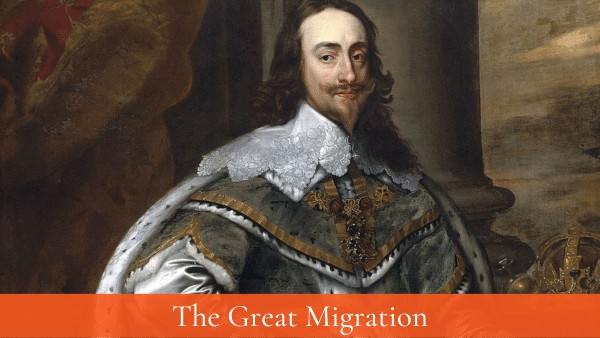
The Great Migration began when the Puritans arrived in Massachusetts Bay Colony in 1630.
The reason the migration occurred was due to the religious climate in England under King Charles I. After he dissolved parliament and began to aggressively oppose Puritan theology and peoples the migration picked up speed.
Many of those who came from England had been wealthy citizens in the mother country but did not like the political unrest and the persecution of their ideas.
These folks who arrived were known for their excellent work ethic and education, which aided the growth of Massachusetts Bay Colony's educational institutions and economy.
The growth of the Great Migration ended abruptly when the Glorious Revolution broke out in England. Many of those who lived in New England returned to England to fight under Oliver Cromwell. After the war, they stayed in England and did not return.
This was many, but not all, and the lasting effects on the colony had already occurred. It quickly outgrew the older Plymouth Colony and would become the primary influence within New England.
6. Harvard University Was Founded in 1636

Harvard University was founded in 1636 by the Great and General Court of Massachusetts Bay Colony. It was the first institution of higher education in the English colonies in North America.
The university was named after John Harvard, an English clergyman who bequeathed it £780 and his library of some 320 volumes.
The university's original purpose was to train Puritan ministers. The curriculum was based on the English university model but also conformed to the tenets of Puritanism.
While Harvard never affiliated with any particular denomination, many of its earliest graduates went on to become Puritan clergymen.
In 1638, Harvard acquired British North America's first known printing press. This allowed the university to publish its own textbooks and other materials.
The charter creating Harvard Corporation was granted in 1650.
7. Roger Williams Was Banished Due To Doctrine
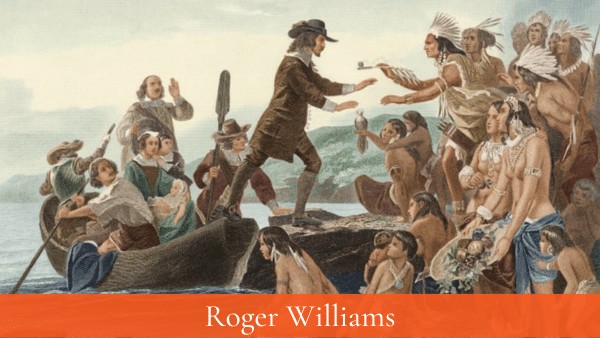
Roger Williams was an English Puritan minister and theologian who founded Providence Plantations, the first colony in North America to offer religious freedom. He was also a strong advocate for fair dealings with the American Indians.
In October 1635, the General Court of Massachusetts Bay Colony tried Roger Williams for sedition and heresy. They found him guilty of spreading "diverse, new, and dangerous opinions" and ordered that he be banished from the colony.
The execution of the order was delayed because Williams was ill and winter was approaching. However, Williams refused to cease publicly teaching his opinions, so the sheriff came to arrest him in January 1636. Williams had already escaped, traveling 55 miles on foot through the deep snow from Salem to Raynham, Massachusetts.
The local Wampanoags offered Williams shelter at their winter camp. Chief Massasoit hosted Williams there for three months until spring. During this time, Williams learned the Wampanoag language and built a strong relationship with Massasoit.
Williams also studied the language of the New England tribes and published the first book-length study of it in English. He believed that it was important to understand the culture and language of the Native Americans in order to have good relations with them.
Rhode Island became a haven for those who were exiled from the Massachusetts Bay Colony. Williams built a lasting friendship with the Narragansett Tribe, which sold him land for a fair price. His relationship was so strong he convinced them to ally themselves with the colonists during the Pequot War.
He was a man who was ahead of his time in many aspects.
8. Anne Hutchinson Became a Hero of Women In Colonial America
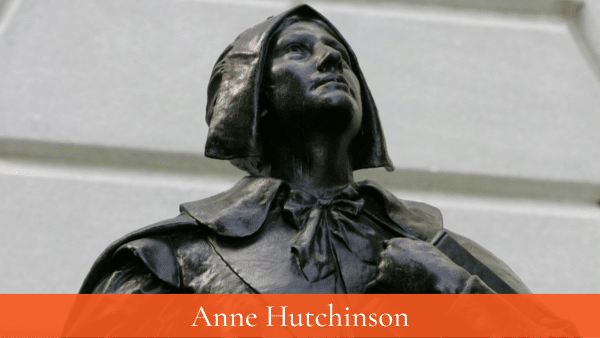
Anne Hutchinson was a Puritan woman who was banished from Massachusetts Bay Colony for her religious beliefs. She believed that salvation was a matter of grace, not works, and she challenged the authority of the local ministers. This led to her trial and conviction in 1637, and she was forced to leave the colony.
Hutchinson and her supporters founded the settlement of Portsmouth, Rhode Island, with encouragement from Providence Plantations founder Roger Williams in what became the Colony of Rhode Island and Providence Plantations
After her husband's death a few years later, threats of Massachusetts annexing Rhode Island compelled Hutchinson to move totally outside the reach of Boston into the lands of the Dutch.
Five of her older surviving children remained in New England or in England, while she settled with her younger children near an ancient landmark, Split Rock, in what later became The Bronx in New York City.
Tensions were high at the time with the Siwanoy Indian tribe. In August 1643, Hutchinson, six of her children, and other household members were killed by Siwanoys during Kieft's War.
The only survivor was her nine-year-old daughter Susanna, who was taken captive.
9. Connecticut Colony Was An Offshoot Of Massachusetts Bay Colony
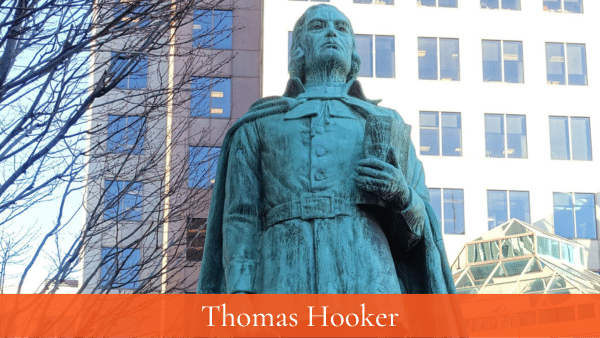
Around the time of Roger Williams and Anne Hutchinson was a towering colonial figure named Thomas Hooker.
He was an influential pastor in Massachusetts Bay, but his political views came into conflict with others in Massachusetts.
Voting in Massachusetts was limited to freemen, individuals who had been formally admitted to their church after a detailed interrogation of their religious views and experiences. Hooker disagreed with this limitation of suffrage, putting him at odds with the influential pastor John Cotton.
Owing to his conflict with Cotton and discontented with the suppression of Puritan suffrage and at odds with the colony leadership, Hooker and the Rev. Samuel Stone led a group of about 100 who, in 1636, founded the settlement of Hartford, named for Stone's place of birth, Hertford in England.
This was a different founding than that of Roger Williams and Anne Hutchinson. Hooker had disagreements, but he was not banished. His doctrine remained in line with Puritans, but he wanted to expand voting rights.
He was influential in the writing of the Fundamental Orders of Connecticut, which would become an influential founding document. He was a strong advocate that the rights of those in power came from the consent of the people.
10. The Pequot War Threatened To Destroy New England
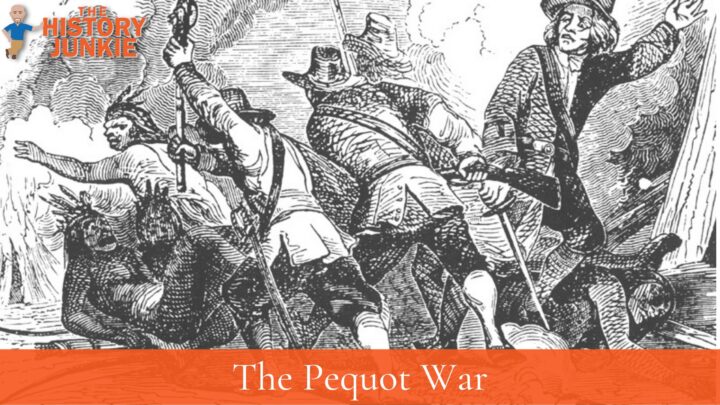
Despite what many are taught in history books, the early colonists of New England got along with most of the natives, and this can be seen by how many allied themselves with the colonists during the Pequot War.
The Pequot tribe was a more aggressive tribe and had developed issues with the colonists due to the fur trade. The fur trade had been a lucrative resource for Native American wealth, and when colonists began to move into the area, they naturally sought to make income from the trade as well.
Adding to the tensions, John Stone and seven of his crew were murdered in 1634 by the Niantics, western tributary clients of the Pequots.
According to the Pequots' later explanations, they murdered him in reprisal for the Dutch murdering the principal Pequot sachem Tatobem, and they claimed to be unaware that Stone was English and not Dutch. This was a lie.
War broke out, and it seemed as if the Pequot had the upper hand. However, with the help of their Native American allies, the colonists began to take control of the war.
The war reached its breaking point at the Mystic Massacre. After many months of consistent raids on colonial villages, which killed many women and children, the colonists caught up the the Pequot at Mystic village.
They surrounded the village and destroyed it, leaving 500 dead. The battle destroyed the Pequot's will to fight, and the war ended a few months later.
11. New Haven Colony Was a Failure

The New Haven Colony was a small English colony in Connecticut that existed from 1638 to 1664. It was founded by a group of Puritans who arrived in Boston and wished to create a port to take advantage of trade between Boston and New Amsterdam.
The colony never had a charter, which made it difficult to trade and grow. In addition, the soil was rocky, and farming was difficult.
Despite these challenges, the colony survived for 26 years. In 1664, the colony was absorbed by the larger and more powerful Connecticut Colony. The towns of the New Haven Colony became part of Connecticut, and the city of New Haven was founded.
The New Haven Colony was a short-lived experiment, but it played an important role in the history of Connecticut.
The colony's founders were committed to religious freedom, and they helped to establish a foundation for religious tolerance in Connecticut.
The colony also helped to develop the economy of Connecticut, and it laid the groundwork for the city of New Haven, which is now a major city in the state.
It would also become the location of Yale College.
12. Puritan Women During This Time Are Misunderstood
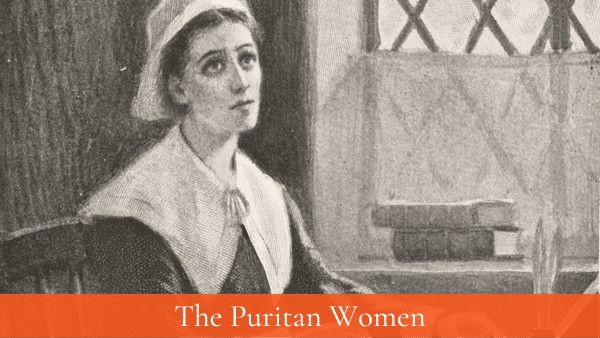
Women during this time period were often viewed as oppressed when compared to the modern woman, but this was not the case from their perspective. This is disrespectful to these women who were influential in their homes and community.
There is also a conservative view that goes too far with making these women grateful for their husbands and extremely submissive. We can see in some Puritan writings where women poked fun at their husbands, who viewed themselves as being smarter than women.
Puritan women had many roles, and despite not being allowed to vote, many would become landowners and the sole breadwinners of their family.
However, most took on the role of farmhand, gardening, cooking, and tending to their family.
Many women would have many children and, unfortunately, due to the medicine of that time, would have to endure dangerous childbirth that left too many infant deaths and the death of the mother. Childbirth was a wonderful and scary time.
It was common for many women to die, and their husbands remarry within a year or two. Many of these men would have two or three wives that died in childbirth.
These women were extremely strong and endured more hardship than the women today. Often, education would fall on the mother, and she would need to teach her children at a young age.
It is quite impressive how effective they were, as the Puritans were some of the most educated in the world during that time.
13. The Economy Was Much Different Than The Southern Colonies

One of the primary differences in the economy of the Massachusetts Bay Colony and the Southern Colonies was the terrain.
The terrain in Massachusetts Bay was rocky and did not suit well for much farming. The colonists made the most of it and still grew wheat, pumpkins, beans, corn, squash, and other vegetables that helped give them a decent food supply, but their farms were never the large plantations of the South.
They relied on developing the forest, building a thriving fishing industry, hunting wild game, and establishing much trade.
The timber allowed them to become a shipbuilding leader in the New World, which then enabled them to trade with other colonies and England. This quickly led to a wealthy merchant class by the time of the 18th century.
The massive influx of settlers also brought in a steady flow of supplies to the colony.
14. King Philip's War Ended Many Years of Peace Between the Colonists and the Wampanoag and Narragansett Tribes
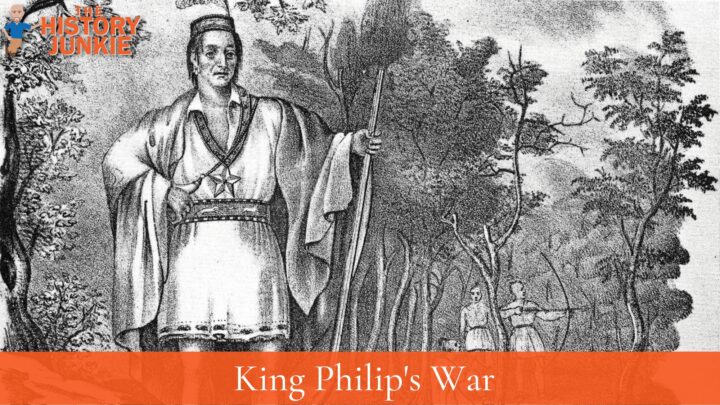
Chief Massasoit had maintained a long-standing alliance with the colonists. Metacom, his younger son, became tribal chief in 1662 after Massasoit's death. Metacom, however, forsook his father's alliance between the Wampanoags and the colonists.
The colonists insisted that the 1671 peace agreement should include the surrender of Indian guns; then, three Wampanoags were hanged in Plymouth Colony in 1675 for the murder of another Wampanoag, which increased tensions.
Indian raiding parties attacked homesteads and villages throughout Massachusetts, Rhode Island, Connecticut, and Maine over the next six months, and the colonial militia retaliated.
The Narragansetts remained neutral, but some Narragansett may have privately participated in raids of colonial strongholds and militia, so colonial leaders deemed them to be in violation of peace treaties.
The colonies assembled the largest army that New England had yet mustered, consisting of 1,000 militia and 150 Indian allies. Governor Josiah Winslow marshaled them to attack the Narragansetts in November 1675.
They attacked and burned Indian villages throughout Rhode Island territory, culminating with the attack on the Narragansetts' main fort in the Great Swamp Massacre. An estimated 600 Narragansetts were slaughtered, and their coalition was taken over by the Narragansett sachem Canonchet.
They attacked farms and homes in Massachusetts Bay and Plymouth colonies, burning towns as they went, including Providence in March 1676, despite the neutral stand that Providence had taken. However, the colonial militia overwhelmed the Indian coalition.
By the end of the war, the Wampanoags and their Narragansett allies were almost completely destroyed. On August 12, 1676, Metacom fled to Mount Hope, where he was killed by the militia.
15. Plymouth Colony Was Absorbed in 1691

Despite being the first colony in New England, the Plymouth Colony never saw the growth or influence of the Massachusetts Bay Colony.
The first winter of the Pilgrims devastated their population, and despite surviving, it never seemed as if they were as well organized. The Puritans of Massachusetts quickly came in and built many churches, founded many towns, and began to flourish.
Their economy boomed with the Great Migration, and towards the end of the 17th century, they harnassed a prosperous shipping industry.
The influence of Massachusetts Bay dwarfed that of Plymouth, and the colony would be absorbed in 1691.
16. The Salem Witch Trials Cast a Dark Light on the Puritans
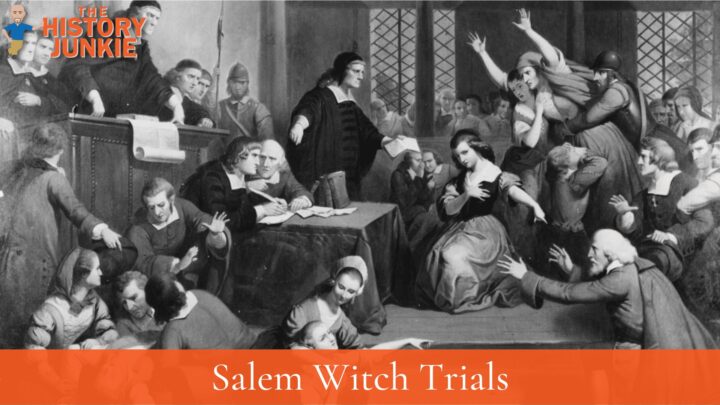
Despite the many accomplishments of the Puritans in Massachusetts Bay Colony, the biggest stain on the colony was the Salem With Trials.
The trials led to the death of 20 colonists (one by being pressed) and judicial reforms to protect against this tragedy from happening again.
Also See: List of people involved in the Salem Witch Trials
One of the primary reasons for the executions was the ridiculous practice of allowing spectral evidence to be used in the courtroom. Spectral evidence gave too much weight to an accuser's testimony and did not allow the accused to properly defend themselves.
The accusers were primarily a group of young teenage girls who would create stories, throw fits, and act possessed in order to generate a conviction. Despite many of the accused pointing out the holes in their stories, the magistrates continued to rely on spectral evidence.
Another point of interest during these trials was the men behind the accusers. Reverend Samuel Parris, who was a failed minister facing the loss of his position, and Thomas Putnam, who was a landowner and seemed to have had a dispute with each of those who were accused.
The trials ended in September of 1692 when Governor William Phips ended the use of spectral evidence and began to pardon those who were still in prison. Increase Mather also began to express discomfort in the use of Spectral Evidence.
17. Massachusetts Was Home To Master Shipbuilders
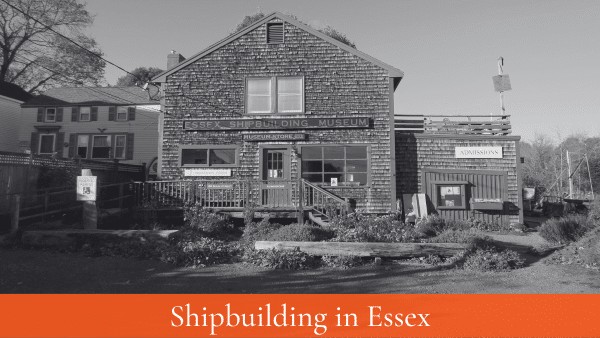
Early settlements, combined with the abundance of oak forests and nearby newly established sawmills on Cape Ann, played a major role in the emergence of the shipbuilding industry on the Essex and Merrimack Rivers and in areas along the northern Massachusetts coastline during the mid-17th century.
A shipbuilding boom in the area commenced around 1710. In the beginning, people built their own boats for fishing and transportation. By the late 18th century, experienced shipbuilders began building a new vessel each winter, fishing it during the summer, and selling the vessel during the fall.
Captains traveled from other ports to the town of Essex and contracted for a new vessel because the Essex shipbuilders possessed unsurpassed skill and craftsmanship. Much of the skills required of shipwrights or shipbuilders were obtained through on-the-job training, and many of the earliest shipyards and boat shops operated as family businesses passed down from generation to generation.
Lowell's Boat Shop in Amesbury, Massachusetts, for example, was originally constructed in 1793, run by several generations of the Lowell family, and is the oldest, continually operating boat shop in the United States. (Excerpt from NPS.Gov)
18. The Power of the Clergy Could Be Suffocating
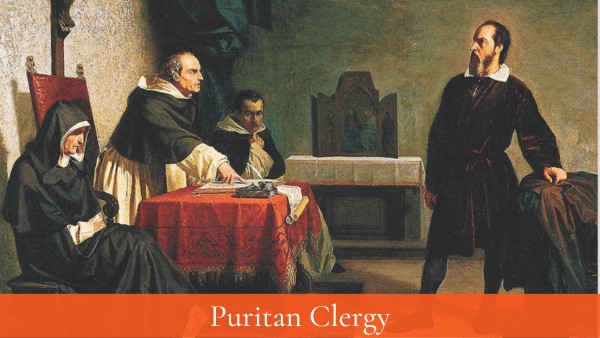
Being founded by Puritans led to an emphasis on self-governing and religion.
Despite the Puritan tradition being grace-based, which was how the Reformation exploded throughout Europe over time, as what happens to many denominations, they fell into a more works-based faith.
This change would lead to a suffocating clergy that led to many banishments and, as time passed, many migrations. Benjamin Franklin would migrate from Boston to Pennsylvania and found religious freedom in Pennsylvania to be a pleasant change of scenery.
Despite the criticisms of the clergy, they did accomplish many important things. They emphasized education, which led to Massachusetts being one of the most educated colonies in the 13 colonies. They had many missionaries who lived with the natives and converted them from their pagan religion to Christianity.
Their orthodoxy also had its benefits because it kept them focused. They worked hard and, due to that hard work, became successful.
Many of their ideals would be revolutionary and have a significant impact during the American Revolution. Men such as John Adams and James Otis often relied on Puritan logic when pushing back on what they believed to be religious tyranny.
19. Massachusetts Supplied More Soldiers Than Any Colony During the French and Indian War
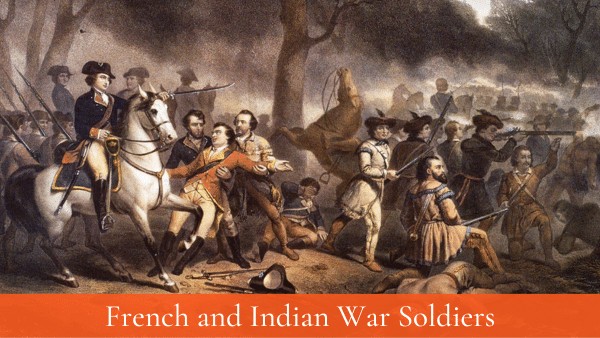
By the mid-18th century, England and France had become the dominant powers in the Western Hemisphere, with the British controlling the present-day east coast of the United States and the French controlling Canada.
the two powers would eventually collide in Europe, which would become known as the Seven Years' War. In the 13 colonies, it would become known as the French and Indian War.
Also Read: 8 Facts About The French and Indian War
When the war broke out, many provincial governors raised troops, and Massachusetts was no exception. The colony had become one of the most populace, and their location in Canada made them more likely the feel the thrust of the war.
Provincial soldiers would have to work to earn the respect of British soldiers and officers. They had not received formal training and were not as disciplined as the British. This led to the British calling colonists "Yankee Doodle".
The colonists proved effective during many conflicts and became known for their marksmanship. They had adopted an Indian style of fighting, which was more effective than the traditional European style of warfare.
Despite the criticism, most provincials from Massachusetts were honored to serve the mother country and extend its borders. However, after the war, the relationship with England would steadily erode.
20. The Townshend and Intolerable Acts Cause An Uproar
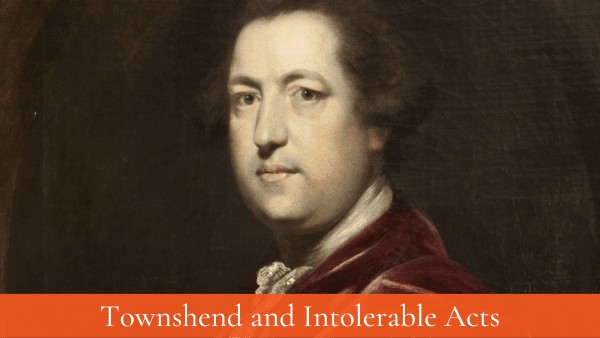
After the French and Indian War, Great Britain had a large debt to pay off, and they had not tapped into their colonies.
Their colonies lived with low tax burdens and experienced more wealth than the average English man or woman, so in order to make the colonies pay, they enacted various acts.
The first of these acts was the Sugar Act, which was an amendment to the older Molasses Act. This act was seen as controversial but did not ignite the firestorm that would soon come.
A year later, the British passed the Stamp Act, which caused an uproar in the colonies and led to the creation of the Sons of Liberty and other groups. The Stamp Act Congress was formed, and many future leaders began to make a name for themselves. The act would be nullified a year later.
The Quartering Act and Declaratory Act were passed and were also met with complaints, but this did not compare to the passing of the Townshend Acts. These acts were met with such fervor that it would lead to the Boston Massacre.
Six years after the Townshend Acts, Great Britain passed the Tea Act. Once again, the act was met with much anger in Massachusetts and would lead to the Boston Tea Party, which would cost the British a fortune in Tea.
In response to the destruction of the Tea, the British passed the Intolerable Acts. These acts were passed in 1774 and would lead England into direct conflict with New England and eventually be a primary cause of the Revolutionary War.
21. Sons of Liberty and Other Resistance Organizations Existed Throughout Massachusetts
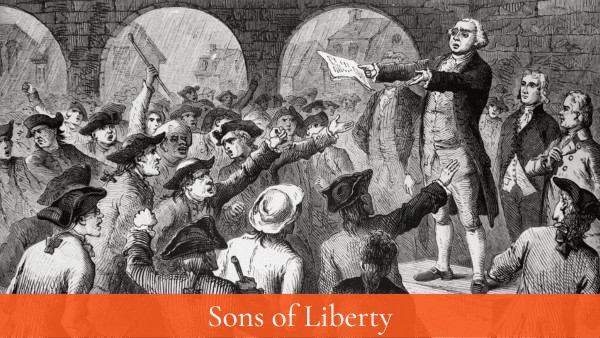
The Sons of Liberty was a loosely organized political group that was active in the Thirteen American Colonies during the 18th century. They were dedicated to advancing the rights of the colonists and fighting taxation by the British government. The Sons of Liberty played a major role in the Stamp Act protests of 1765 and throughout the American Revolution.
The Sons of Liberty was not a formal organization with recognized members and leaders. Instead, the name was used to refer to any men who were resisting new Crown taxes and laws. This allowed the Sons of Liberty to operate in secret and to avoid detection by the British authorities.
The Sons of Liberty were known for their use of propaganda and intimidation. They often published pamphlets and broadsides that criticized the British government and urged the colonists to resist taxation. They also used violence to achieve their goals. For example, they tarred and feathered tax collectors and destroyed shipments of British goods.
The Sons of Liberty were a significant force in the American Revolution. They helped to spread the message of resistance to taxation and to unite the colonists in their fight for independence. Their motto, "No taxation without representation," became a rallying cry for the Revolution.
22. The Boston Massacre Leads To More Blood
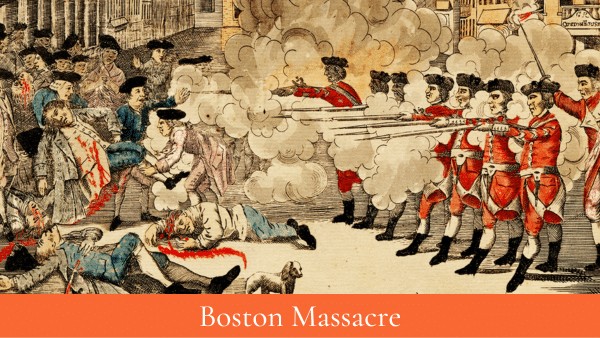
The Boston Massacre was a confrontation in Boston on March 5, 1770, in which a group of nine British soldiers killed five people out of a crowd of three or four hundred who were harassing them verbally and throwing various projectiles.
The event was heavily publicized as "a massacre" by leading Patriots such as Paul Revere and Samuel Adams. British troops had been stationed in the Massachusetts Bay Colony since 1768 in order to support crown-appointed officials and to enforce unpopular Parliamentary legislation.
Amid tense relations between the civilians and the soldiers, a mob formed around a British sentry and verbally abused him.
He was eventually supported by seven additional soldiers, led by Captain Thomas Preston, who was hit by clubs, stones, and snowballs. Eventually, one soldier fired, prompting the others to fire without an order from Preston.
The gunfire instantly killed three people and wounded eight others, two of whom later died of their wounds.
The crowd eventually dispersed after Acting Governor Thomas Hutchinson promised an inquiry, but they re-formed the next day, prompting the withdrawal of the troops to Castle Island.
Depictions, reports, and propaganda about the event heightened tensions throughout the 13 Colonies, notably the colored engraving produced by Paul Revere.
23. The Boston Massacre Trials Was A Landmark Decision
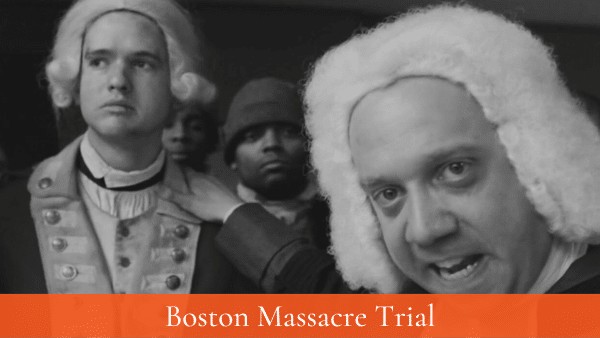
The Boston Massacre Trial was a series of trials that took place in Boston in 1770 following the Boston Massacre, an incident in which British soldiers fired on a crowd of unarmed civilians, killing five and wounding six.
The trial would be prosecuted by Robert Treat Paine, and the defense lawyer would be John Adams. Both would be signers of the Declaration of Independence later that decade.
The first trial, Rex v. Preston, was held against Captain Thomas Preston, the commanding officer of the British soldiers involved in the Massacre. Preston was charged with murder, but he was acquitted by the jury after a short trial.
The second trial, Rex v. Wemms et al., was held against eight of the soldiers who had fired on the crowd. The soldiers were charged with murder, but they were found guilty of manslaughter. Two of the soldiers, Hugh Montgomery and Matthew Kilroy, were sentenced to death, but their sentences were later commuted to branding.
The Boston Massacre Trials were a landmark in American legal history. They were the first trials in which the right to a fair trial by jury was guaranteed to British subjects in the colonies.
John Adams would go on to say it was his finest moment.
24. The Boston Tea Party Escalated New England Closer to War
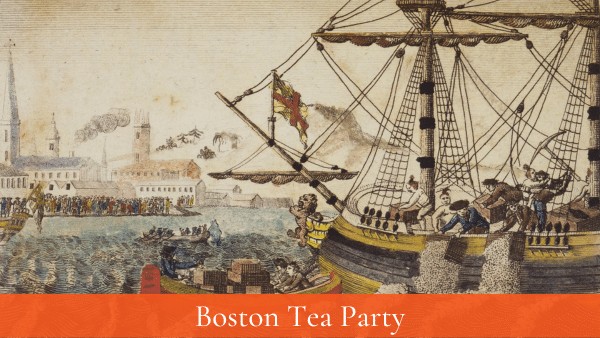
The Boston Tea Party was a political protest that took place on December 16, 1773, in Boston, Massachusetts. The Sons of Liberty, a group of colonists who opposed British rule, boarded three ships belonging to the British East India Company and dumped 342 chests of tea into Boston Harbor.
The protest was in response to the Tea Act of 1773, which gave the British East India Company a monopoly on the sale of tea in the American colonies.
The colonists opposed the Tea Act because they believed that it was an attempt by the British government to tax them without their consent.
The Boston Tea Party was one of the major turning points in the relationship between the colonists and the British government. It seemed as if war may be inevitable.
In response to the Boston Tea Party, the British shut down the Boston Port.
25. The British Are Put Under a Siege in Boston
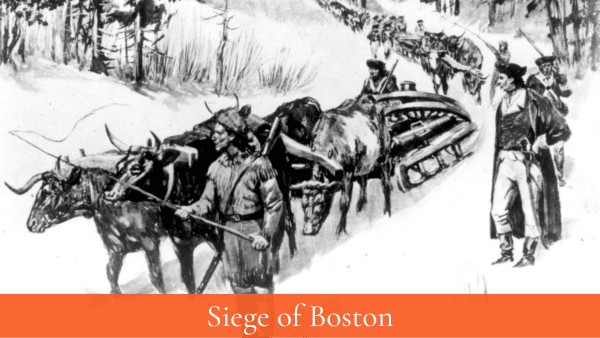
After the French and Indian War, it seemed as if everything the British did escalated the situation in Boston and throughout the colonies. It finally resulted in the Battles of Lexington and Concord and the Battle of Bunker Hill.
Also Read: 11 Facts About the Battles of Lexington and Concord
These battles resulted in the colonists placing Great Britain under siege while the delegates in Philadelphia debated independence.
George Washington was placed at the head of the Continental Army and arrived in Boston to take command of the siege. At this point, many colonies had joined in the siege, and war seemed imminent.
After the Fall of Ticonderoga, a plan was executed by Henry Knox to retrieve artillery from the fort and then place those weapons on Dorchester Heights.
Also Read: Famous Battles of the Revolutionary War
Knox made an epic march and managed to get the weapons to Dorchester Heights. The British woke up to artillery, able to wreak havoc on their position. General William Howe retreated from Boston and began to make plans to attack New York.
The British would return, and the Revolutionary War had begun.
